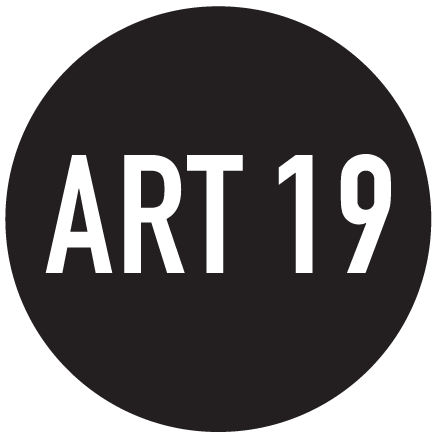OCULA : Gerhard Richter : Image and Reflection
Image and Reflection is Gerhard Richter's fifth solo exhibition at Sies + Höke. Forty works in a wide range of media are on view, including paintings, glass objects, mirror pieces, and tapestries. The show focuses on the motif of mirroring as a central principle within Richter's oeuvre. The artist not only uses mirroring as a physical phenomenon, with reflecting glass surfaces and actual mirrors, but also as a pictorial strategy, by repeating and multiplying structures and colours, as in his Strip paintings.
As Richter noted in 1993, 'Every picture is a mirror.' He is interested in the fugacity and simultaneity of mirror images, especially in comparison to the painted picture. He has no confidence in the ability of either to depict the truth objectively. Both mirrors and paintings ultimately show constructed realities: 'In the mirror', as Dieter Schwarz observes, 'physical presence as a material object and fleeting illusion come together as an image, in that respect perhaps comparable to the fluorescent tubes of Dan Flavin, which are also both material objects while creating ephemeral spaces of colour at the same time.'
Since the 1960s, Richter has been working with glass and mirroring as a creative medium. The early framed panes of glass moving in space were followed in the 1980s by unframed mirrors that Richter numbered in his catalogue raisonné, granting them a status equal to that of his paintings. The grey mirrors that emerged during this period mark a transitional form: neither a clear image nor pure surface, but something in between, a zone of uncertainty in which perception, light, and space are constantly renegotiated. In Richter's words, 'Neither a mirror nor a monochrome painting'.
Richter still uses this principle today: the most recent work in the exhibition dates from 2024 and attests to the unbroken topicality and relevance of the mirror in Richter's oeuvre. 11 Grey Mirrors, On Top of One Another, which is here shown publicly for the first time, consists of eleven rectangular mirrors with a layer of grey paint on their verso arranged one on top of another, forming a vertical line on the wall. The work, which is a total of 3.74 meters high and only 40 cm wide, recalls in its serial construction and reduced format the minimalistic floor works of Carl Andre. At the same time, it explores something fundamentally different: those moving in the room only appear briefly in the reflection, a fleeting moment of recognition and disappearance. Transience thus becomes directly palpable.
During the 1990s, three variations of the matte steel spheres were created that capture the entire room in a reflection, depicting it in a distorted fashion. Later, Richter worked intensely with glass, often using reflective panes of Antelio glass which he piled up on top of one another or mounted on the wall. The idea of the mirror image is combined with the negation of an image. Schwarz compares this principle with the silence in John Cage: 'These panes of glass were a picture of nothing, but they reflected, scarcely perceptible, their surrounding space and lent the events an appearance. There cannot really be a picture of nothing, since both wall and surroundings are always real, just as the normally barely audible permanent carpet of sound that can suddenly be heard at a performance of John Cage's piano piece 4' 33'.'
An additional group of works emerged starting in 2008 in connection with Richter's drafts for the stained-glass window he designed for Cologne Cathedral: highly colourful paintings behind glass with titles such as Aladin, Perizade or Flow. Richter here uses lacquer paints, pressing a pane of glass into the wet paint and then sealing it on the verso with an aluminium Dibond plate. Just as with the squeegee technique, he thus transfers the act of composition to a moment of controlled chance, with which he defamiliarises the original painting. The glass serves here not just as a support, but also as a reflective surface – it generates depth and reflects the space, while the lacquer beneath loses all materiality and becomes pure colour.
Digital mirroring techniques also found their way into Richter's work. Based on the abstract painting 724-4, the artist developed symmetric compositions using horizontal and vertical mirroring, later by way of fragmentation, repetition, and digital processing. This resulted in tapestries entitled Musa, Yusuf, Iblan, and Abdu, as well as the Strip prints, which follow the principle 'divided mirrored repeated'.
In Gerhard Richter: Image and Reflection, works using various media enter into dialogue with one another. They share an engagement with the constitution of the image, its flatness and apparent objectivity.
To accompany this exhibition, a catalogue will be published with an essay by Dieter Schwarz.
Curated by Dieter Schwarz at Sies + Höke.
16 May–28 June 2025 Düsseldorf
Address : Poststrasse 2+3, Düsseldorf, Germany
Opening Hours : Monday–Friday: 10am–6.30pm
Written for https://ocula.com/

















